Top 10 Credit Card Logos: Faces of Plastic Money
Hi, money lovers! Have you seen those logos printed on every credit card? These minor signs represent financial might and trillions of dollars worth of transactions. From the timelessly sleek to the playfully bizarre, credit card logos have evolved into cultural symbols themselves.
This fascinating investigation examines the best ten credit card logos' history, meaning, and brilliance. Prepare to be amazed by creative design and advertising sorcery that have seared these images into our minds as a society.
And now, without further ado – let us explore the famous faces behind our cash substitutes!
Table of Contents
1. The Timeless Brilliance of Visa's Perpetual Motion
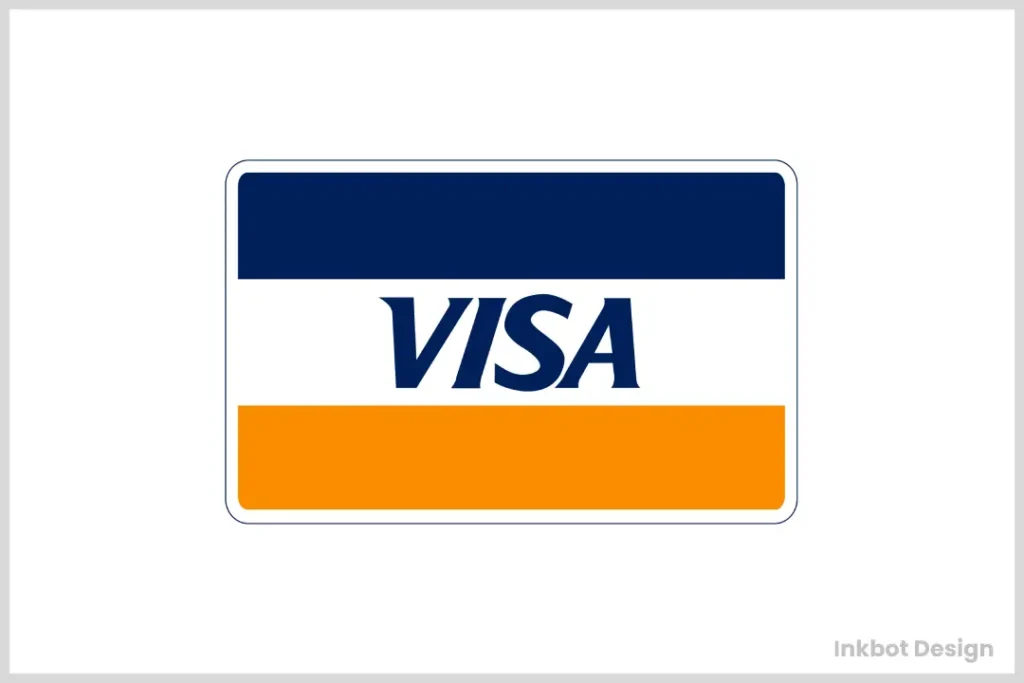
Number one on our list is Visa’s old credit card logo. No other credit card logo could ever be more well-known than this. Its design is simple but eye-catching.
Invented in 1976 by Dee Hock, the genius behind the concept of perpetual motion as a metaphor for worldwide transactions was nothing short of brilliance. This can be seen through two horizontal rectangles and the logotype, which makes it seem like they are continuously moving around each other forever. It creates an impression that things are constantly changing and everything is connected with everything else everywhere.
However, there is much more than what meets one’s eyes about this emblem. The choice of vibrant colours was intentional to make it easily noticeable among all those blue and red logos displayed on payment terminals worldwide. Also important is its sleekness – a sans-serif font that gives off modernity and confidence vibes.
Behind The Masterpiece Meaning
The most important thing about visa logos is what they represent or mean to people who see them every day without even knowing why they like looking at them: convenience brought closer home by technological advancement where there are many features attached like touch screen options or even face recognition software used these days when paying for goods/services online etc. People want reliability from their financial institutions, so strong fonts were used here/
2. MasterCard's Iconic Overlapping Circles: A Stroke of Genius
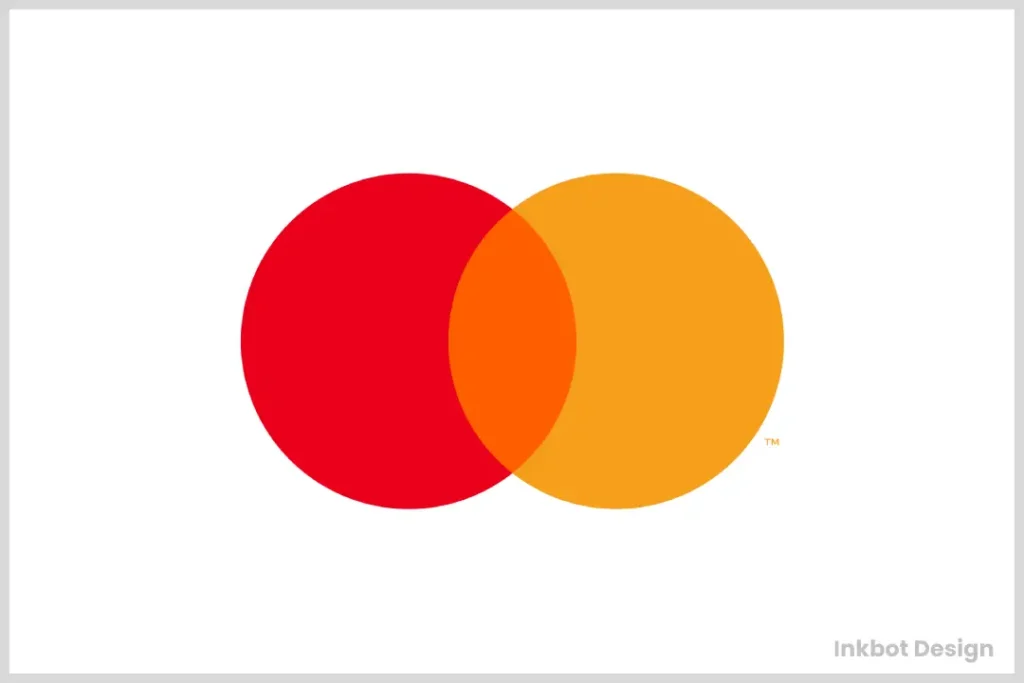
If Visa’s logo can be considered minimalism at its finest, then MasterCard’s two circles may be the perfect marriage between simplicity and symbolism. The design appears to be simple, but it is undoubtedly rich in meaning. People can instantly identify it and get what it stands for without realising how many ideas are represented by only one image.
Siegel+Gale came up with this design in 1979. It consists of two circles – one red, one yellow – overlapping like a Venn diagram. However, those are not ordinary round shapes; they were meant to show that Mastercard helps people across different countries make international payments quickly and easily.
Unintended Symbols
These overlapping circles represent intermediaries connecting customers, merchants and financial establishments. The red circle represents customers while the yellow one shows institutions; hence, their integration denotes that without them both, there would be no transaction and, therefore, no need for a master card.
Surprisingly enough! This font used within the logo is elegant and bold enough, thus representing confidence paired with modernity primarily since most words have been written in sans-serif letters. In contrast, others have remained in lowercase letters, which makes reading them more complicated than usual. However, this only affects their recognition even when viewed from far away, thanks to those bright colours chosen for this purpose.
3. American Express: A Timeless Emblem of Prestige
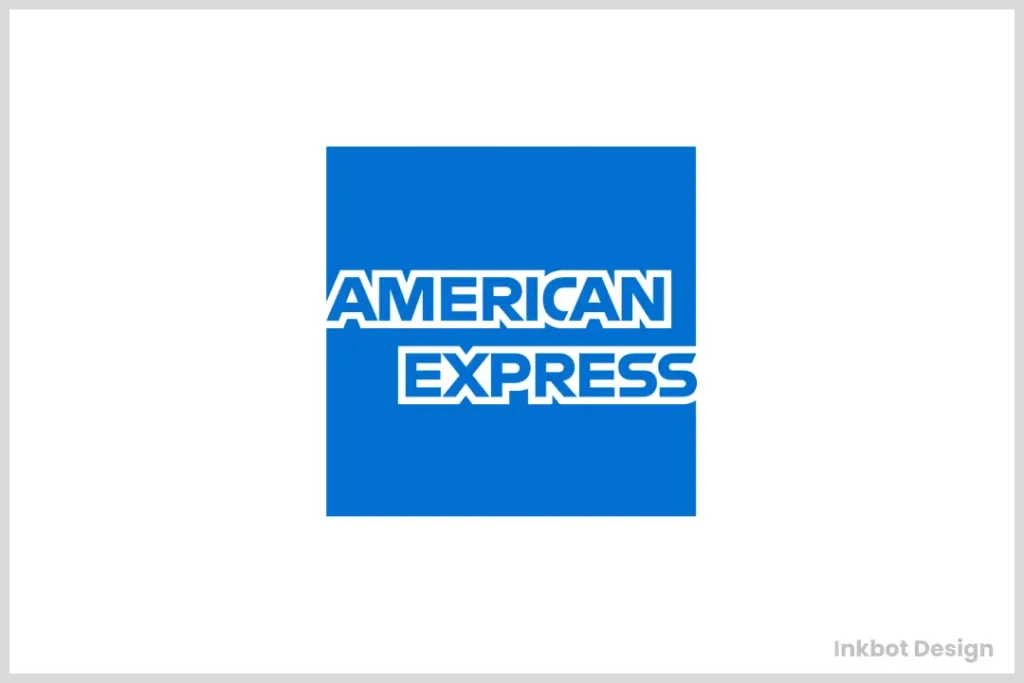
Hardly any credit card logo can convey the feeling of luxury and exclusivity better than the timeless American Express logo. This sophisticated design is an understated branding masterpiece that combines tradition with symbolism.
The American Express logo, introduced in 1958, comprises a striking square symbol around a bold “American Express” wordmark. In creating this artistic emblem, various representative elements are now associated with the brand.
Understanding the Beauty of the Image
At its core, it is an excellent gladiator sign that shows the firmness and resilience of the business enterprise. An eagle standing for freedom and movement – features that have been part and parcel of American Express throughout many years – stands beside this world-famous character.
However, there’s more to it than meets the eye because within those beautiful laurel wreaths lie centuries-old traditions and records for excellence achieved by companies under this name; also, trustworthiness represented here by the vibrant blue colour has always remained characteristic of Amex.
4. Discover's Brushstroke of Brilliance: A Trailblazer in Branding
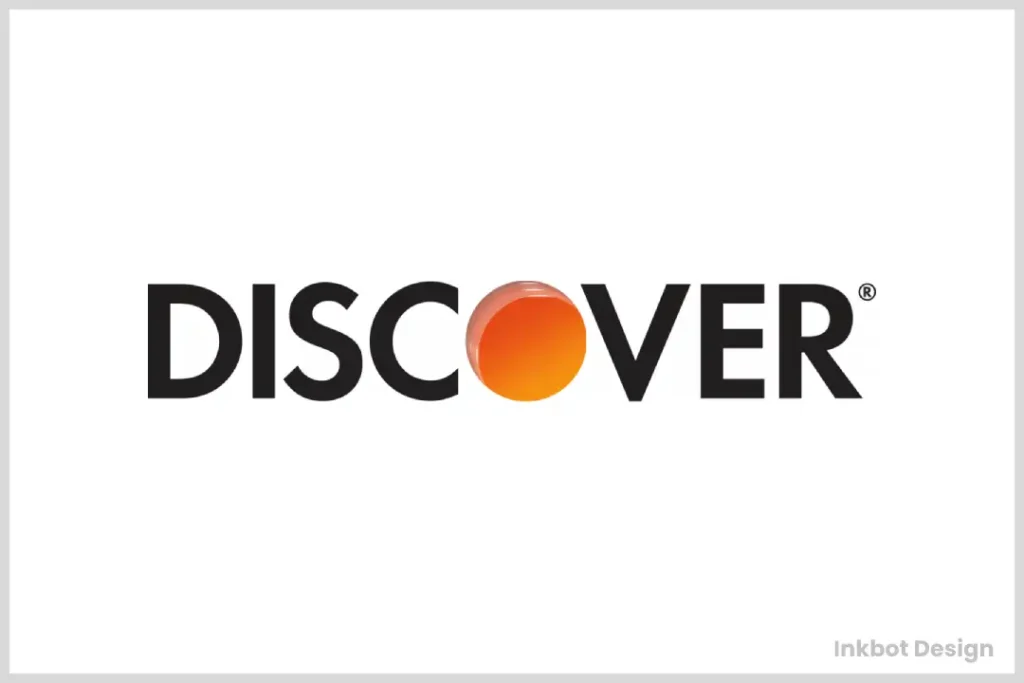
Discover may have just entered the credit card industry, but its logo has already become a classic example of modern branding that cannot be forgotten in this field. The original logo was designed by Siegel+Gale in 1985 and represents the spirit of exploration.
Initially, the Discover logo seems too simple: a sans-serif wordmark next to an orange visual. However, this brushstroke does more than just look nice; it is one of those rare elements that makes a logo stand out from all others.
What’s Hidden Within This Brushstroke?
The brushstroke symbolises their dedication to constantly pushing boundaries to inspire people to try new things and find joy through learning about different places or things. The bright, warm shade of orange used for it also gives off positive vibes, perfectly matching the brand’s forward-thinking attitude.
But what truly sets this brushstroke apart from other design elements is how flexible it can be when applied strategically across various touchpoints – thanks to some brilliant marketing moves on Discover’s part!
5. Chase's Iconic Octagon: A Study in Simplicity and Strength

Simplicity can be a powerful device in credit card logos, so it’s no surprise that Chase’s iconic octagon logo is an exercise in understated elegance. For years, this sleek geometric design has been used on their products to signify strength and reliability instantly.
Unveiled in 1961, the Chase logo consists of a bold navy-blue octagon surrounding the brand’s wordmark set in a neat sans-serif typeface. Although the design may seem simple at first glance, its minimalism hides deeper meanings and symbols that have resonated with customers through the ages.
The Octagon’s Hidden Meaning
The shape of this figure alone pays tribute to Chase's long history rooted in firmness and ability to bounce back after hard times. Having eight sides and robust angles makes an octagon very strong, just like what it has symbolised for over a hundred years, built by J.P Morgan, who believed only strong banks should exist.
However, there is more than meets the eye when looking at these logos. If you look closely enough or read between the lines, “hidden messages” will become apparent, intentionally included during the creation process.
6. Capital One's Whimsical Twist: A Breath of Fresh Air
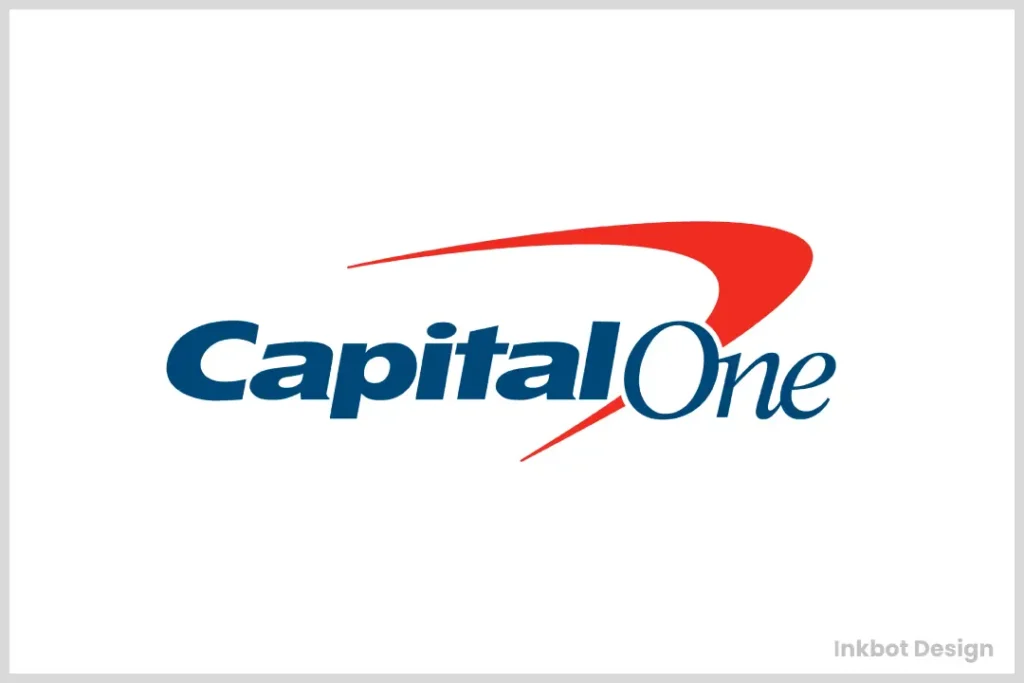
Capital One’s playful and light-hearted approach stands out despite many solemn and strict corporate credit card logos. This fantastic design portrays the company’s dedication to making finance more fun and accessible.
The Capital One logo was launched in 2008. It consists of a vibrant stylised wordmark and a delightfully quirky “swoosh” – a dynamic curved line that appears to sway across the logo. This swoosh sets the pace instantly by showing movement and vitality that align well with the brand’s futuristic outlook.
Behind The Swoosh
However, there is more than what meets our eyes regarding this swoosh. It silently points towards Capital One’s desire for change through innovation. In addition, it also represents agility and quickness on the part of Capital One since they can adjust themselves within ever-changing financial environments.
We must also remember their lively red colour scheme because it gives off warmth, energy, and a little playfulness, which has become synonymous with Capital One branding.
7. Citi's Iconic Arc: A Masterclass in Minimalism
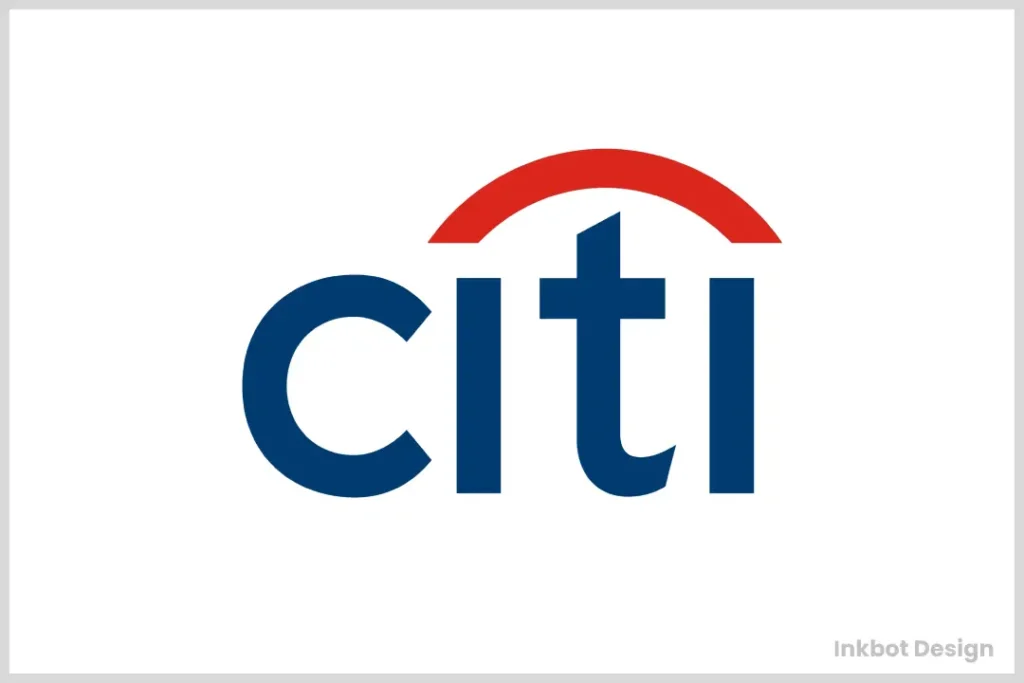
Few can be compared with Citi’s iconic arc design in elegance and sophistication when talking about credit card logos. This smooth, clean masterpiece has adorned the company’s products for years; people worldwide know it on sight, but a wealth of meaning and symbolism lies beneath its simplicity.
The Citi logo was created in 1998: a bold sans-serif wordmark next to an eye-catching red arc. This minimalistic yet powerful visual element has become representative of the brand itself.
Hidden Depth of Arc
Though it initially appears as nothing more than an embellishment, the brilliance behind this arc lies in what it symbolises. At face value, arcs stand for progressiveness or forward motion as they appear dynamic because they keep changing shape quickly or often.
However, this interpretation only scratches the surface; there is much more to discover about such curves than meets the eye! For instance, why do you think I choose vibrant colours like red? It reflects my passion – this hue perfectly works together with sleek modern typography while being quite the opposite thematically speaking. Why seamless integration between letters and symbols? Simple: it gives a sense of unity, bringing confidence and strength through design coherence.
8. Bank of America's Iconic Flag: A Symbol of Patriotism and Trust
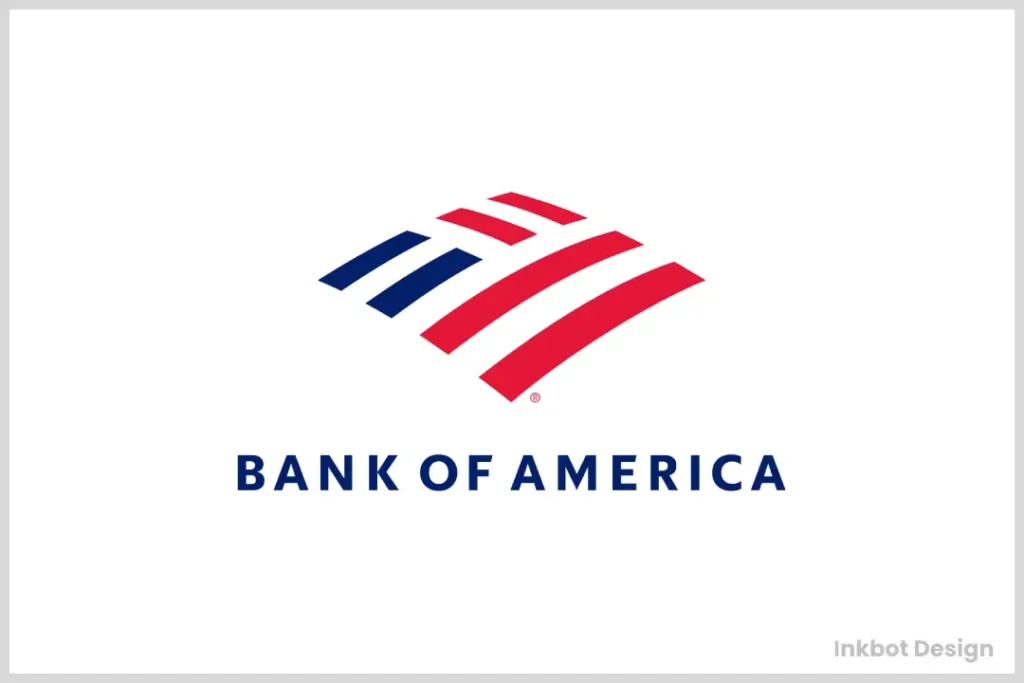
When it comes to credit card logos, hardly any designs can beat the pure patriotic symbolism and emotional resonance of Bank of America’s flag that is iconic. This symbol of power has been on their products for many years, and it immediately makes people think about pride in their country and trust it without end.
In 1998, Bank of America introduced a logo that consists primarily of a strong wordmark set in a modern typeface alongside an American flag rendered in bold red, white, and blue – these simple elements alone speak volumes about what this financial institution stands for; namely its dedication towards meeting everyday Americans’ banking needs.
The Flag as a Powerful Symbol
The brand’s clients are not indifferent to the US flag because this national emblem represents something more profound than just decoration. It signifies Bofa’s unshakeable belief in freedom, opportunity & financial empowerment, which have always formed part & parcel with the American way of life throughout different epochs.
However, the beauty lies within simplicity, too! With sleek lines combined featuring contemporary fonts and vibrant hues selected directly from the “strength” category (such as darkest black), there couldn’t be anything more fitting for such an influential player within finance like Bank Of America. And lastly – everything fits so well together! The wordmark seamlessly blends into the flag, creating unity among them while ensuring each remains recognisable even separately.
9. Wells Fargo's Iconic Stagecoach: A Nod to Heritage and Adventure
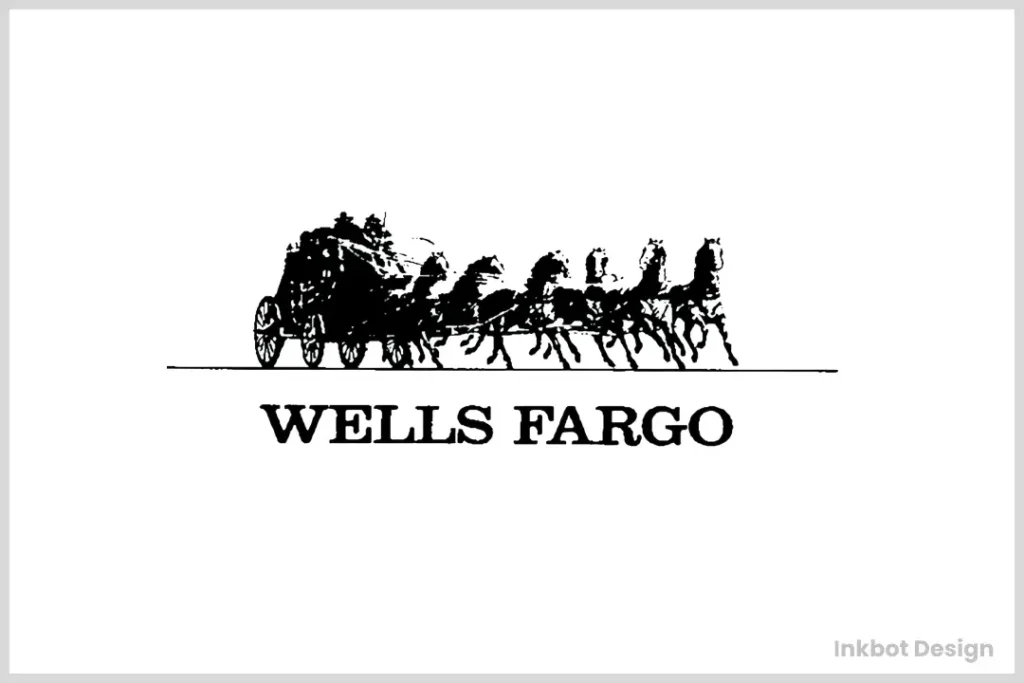
Regarding credit card logos, no other image in the financial world can capture the feeling of change like Wells Fargo’s stagecoach emblem. The logo is filled with history and adventure.
Created in 1962, this logo includes a strong wordmark with a sleek stagecoach that immediately takes you back to those rough landscapes from days in America’s West.
The Foreverness of the Stagecoach
The stagecoach isn’t just there for looks; it is a powerful symbol for the brand. Wells Fargo began its life as an express delivery company during the frontier period of 19th century America, so this iconic mode of transportation represents reliability above all else — along with the toughness and adventurous spirit that those times demanded.
But this symbol goes deeper still; while most people might not notice at first glance what makes this design so unique, they’ll eventually see how vibrant reds fill every inch of space around modern-looking typography – giving off warmth and energy while still staying relevant today (just as any good logo should).
10. Barclays' Iconic Eagle: Soaring to New Heights

To round off the list of iconic credit card logos, we have Barclays’ majestic eagle design – a firm emblem representing the brand’s ambition to grow and achieve greatness continually.
Launched in 1969, the Barclays logo consists of a bold stylised wordmark accompanied by an eagle symbol – this ensures immediate association with power, liberty and grandeur.
The Eagle as a Symbol
Far from being just an aesthetic feature, the eagle is a potent signifier deeply rooted in every level of Barclays corporation. Its presence denotes their everlasting aspiration for development, crossing borders and providing unprecedented financial services worldwide.
However, there is more than meets the eye for this logo. The vibrant blue colour scheme emanates trustworthiness and dependability, which matches the brand's image as a financial giant. Moreover, sleek modern typography guarantees legibility no matter where or how it’s used, thus making it instantly identifiable in any given context.
Conclusion
Credit card logos are intriguing due to their sleek minimalism, like Visa or rich storytelling, as seen on Wells Fargo. They represent design creativity, marketing magic and symbolism in a captivating way. These small icons have grown beyond being identity markers for businesses; they are now cultural references that can connect with millions of people worldwide.
These ten credit card logos show how good designs can be and remind us about eternal values inherent in famous brands, built upon solid narratives told visually, whether we are fans of the design itself or just love good stories made visible through brand creation.
Therefore, when you reach out for your wallet next, spare time to think about those intricate artistic works and symbols engraved on these cards against any other payment method. These little wonders are not mere symbols but peepholes into what makes us human: creativity, inventiveness and an unending desire to communicate better through stories well told in various mediums such as art forms or even business branding.
FAQs:
What is the reason behind the importance of credit card logos?
Credit card logos are essential because they create brand awareness and gain customer trust. These symbols also represent a company’s culture, history and financial capabilities.
How can credit card logos be designed?
Branding experts and designers are responsible for developing credit card logos. When creating these symbols, designers consider aspects such as colour psychology, symbolism, typography, and general visual appeal.
What constitutes an exceptional credit card logo?
An excellent credit card logo should be unique enough to stick in people’s minds long after seeing it. Additionally, it must contain elements that will resonate deeply within the hearts of those the brand targets the most.
Can credit card logos change over time?
Credit card signs could transform themselves through rebranding exercises or staying relevant within dynamic markets if needed.
Do any legal issues surround using certain images on a company’s cards?
Yes, indeed; Trademark rights protect various companies’ emblems; hence, businesses should ensure they don’t interfere with existing copyright laws while developing designs for these marks.
How are consumer perceptions about brands affected by different images used on their plastic money?
Any given particular person may view a specific firm as more credible or dependable based solely upon recognition given by said person towards such entity’s sign. In addition, what do people think about companies when looking at their charge plates?
What role does colour play in designing credit card logos?
Different colours evoke different feelings; therefore, designers should choose wisely depending on what emotion they want customers/clientele members to have each time they see particular brands’ identity marks.
Can simplicity or complexity work against these financial transaction cards’ emblems?
Yes, if it’s too simple, there’s nothing special about it; hence, it's easily forgettable. While on the other hand, if intricately designed, people may fail to recognise them as they should.
How do logos fit into credit card companies' broader branding strategies?
These marks are an integral part of any business establishment’s overall corporate image management plan, considering their ability to enhance customer loyalty through constant exposure across various touch points during service delivery.
